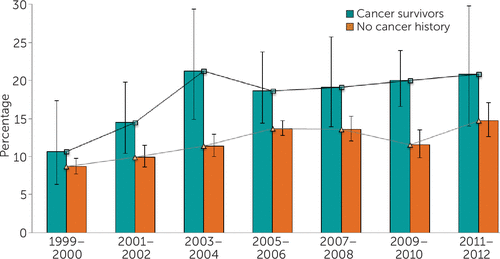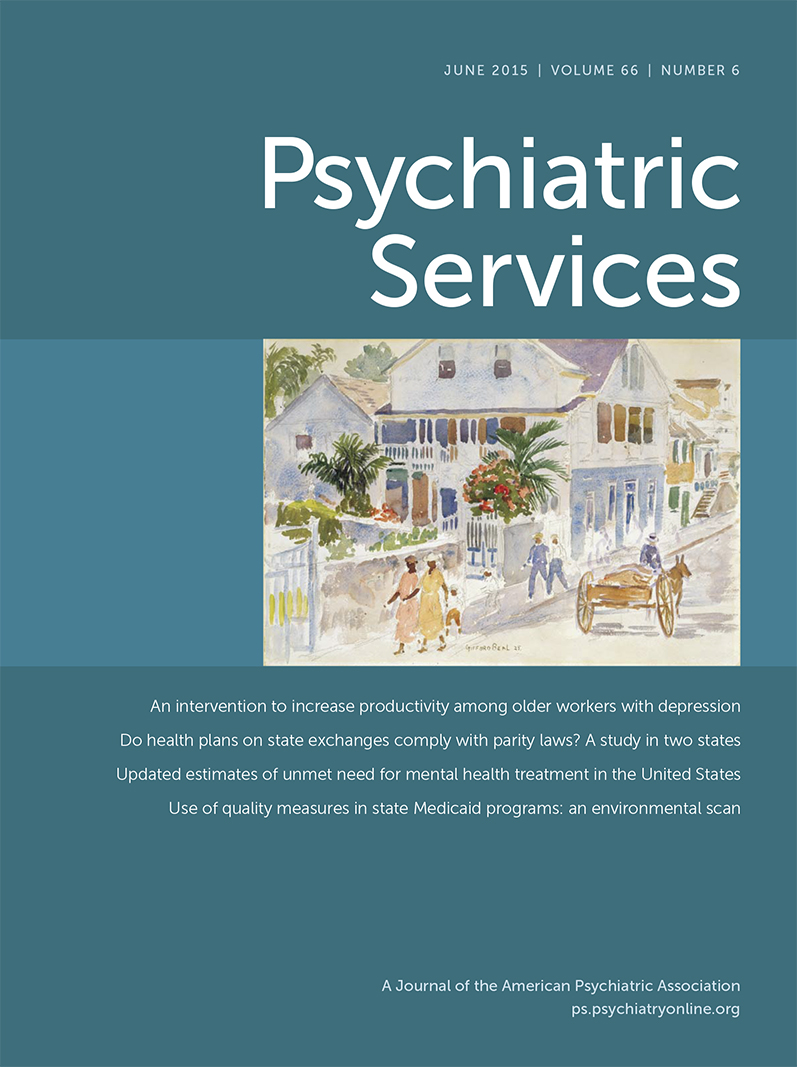Trends in Antidepressant Use Among U.S. Cancer Survivors, 1999–2012
One in three patients with cancer experiences some type of mental disorder (1). Antidepressants are effective in treating depressive symptoms among cancer survivors (2). However, little is known about the prevalence and trends of antidepressant use in this group.
This study tracked trends in antidepressant use from 1999 to 2012 among cancer survivors age ≥20 by using data from the National Health and Nutrition Examination Survey. Diagnosis was ascertained on the basis of the question, “Have you ever been told by a doctor or other health professional that you had cancer or a malignancy of any kind?” Cancer survivorship was defined as a cancer diagnosis (most recent, excluding nonmelanoma skin cancer) three years or more before the survey. Current use of prescription medications was recorded by interviewers on the basis of bottles provided by participants, and they were classified according to Lexicon Plus (www.multum.com/Lexicon.htm). Antidepressants were identified by second-level Multum codes (code 249). To facilitate comparison, sex- and age-adjusted rates of antidepressant use were estimated for adults without a cancer history.
From 1999 to 2012, the average rate of antidepressant use among cancer survivors was 18.3% (95% CI=16.09%−20.62%), compared with 12.3% among adults without a cancer history. Prevalence of use among survivors increased rapidly and nearly doubled (p=.04), from 10.6% (CI=6.3%−17.3%) in 1999–2000 to 20.8% (CI=14.0%−29.8%) in 2011–2012 (Figure 1). Over the same period, a smaller increase (7.2 percentage points) was observed among adults without a cancer history. The trend in use showed some nonlinearity. Among survivors, the rate temporarily declined, from 21.2% (CI=14.8%−29.4%) in 2003–2004 to 18.6% (CI=14.4%−23.7%) in 2005–2006, but resumed increasing thereafter.

FIGURE 1 Prevalence of antidepressant use among U.S. adult cancer survivors and adults without a cancer history, 1999–2012a
a Source: National Health and Nutrition Examination Survey, 1999–2012 waves. Error bars denote 95% CIs.
Antidepressant use among cancer survivors increased notably over the past decade. Future studies should examine benefits of antidepressants and risks of side effects in treating depression among cancer survivors.
1 : Four-week prevalence of mental disorders in patients with cancer across major tumor entities. Journal of Clinical Oncology 32:3540–3546, 2014Crossref, Medline, Google Scholar
2 : Antidepressants in the treatment of depression/depressive symptoms in cancer patients: a systematic review and meta-analysis. BMC Psychiatry 13:140, 2013Crossref, Medline, Google Scholar



